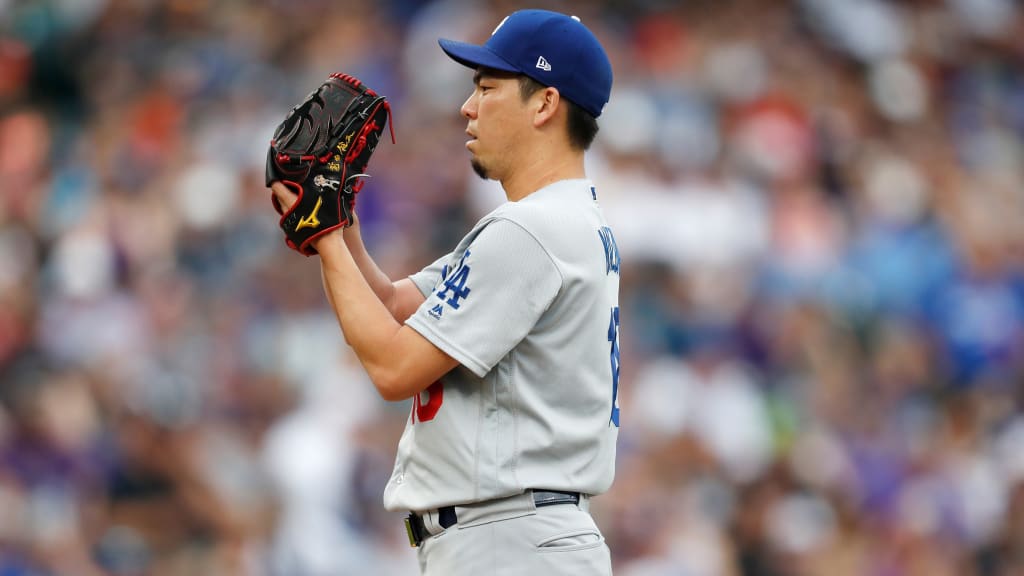
MINNEAPOLIS -- Splashy move? Check. Rotation help? Check.
The Twins' willingness to deal top pitching prospect Brusdar Graterol for starting help in Kenta Maeda shows that they want to win now -- and their offseason moves have reflected that belief. When Spring Training begins on Wednesday, we'll start to learn if those efforts were enough to finally get the Twins over their postseason hump.
In an effort to snap their record 16-game losing streak in the postseason, including a three-game sweep at the hands of the Yankees in last season's American League Division Series, the Twins added Josh Donaldson to the most homer-happy lineup in the Majors and a slew of veteran rotation pieces that give them strong starting depth -- but perhaps without the front-of-rotation upside they sought at the start of the offseason but were unable to land.
How much starting depth? There could be as many as 11 viable starting options at Spring Training this year, featuring apparent locks in José Berríos, Jake Odorizzi, Homer Bailey and Maeda; eventual contributors in Rich Hill and Michael Pineda; and others vying for the final rotation spot in Jhoulys Chacín, Randy Dobnak, Devin Smeltzer, Lewis Thorpe and Sean Poppen.
The Twins' lineup should be championship-caliber. The bullpen should be solid. The question, then: Is there a championship-caliber postseason rotation somewhere in all that starting depth?
There are several factors that could come into play there, and not all of them will have immediate indications in Spring Training.
Berríos continued his forward progress in 2019, but he faltered a bit in the second half (4.64 ERA) behind some issues with his mechanics. The Twins have been working with their young ace to modify his intense workout routine to help him continue to adjust to his increasing workload, and taking another step in that direction could help fortify the front end of the rotation down the stretch.
In addition, Spring Training should give the Twins their first indication of what they can expect from Bailey, reliever Matt Wisler and others as they work with pitching coach Wes Johnson and the pitching brain trust on specific elements that the club has in mind to improve the efficacy of their pitches.
"Our analytics people and our pitching coaches seem to have a sweet tooth for guys that are doing it the wrong way right now that we think we can improve the way they're doing it," general manager Thad Levine said earlier this offseason at TwinsFest. "We're playing a little bit of a volume game where we're trying to acquire as many of those pitchers as we believe we can, and then we're putting programs around those guys to help them not only realize their potential, but really realize beyond what they ever dreamed they could be."
As an example, the Twins acquired Martín Pérez last season with the idea that his lower half was underutilized in his mechanics and he was incorrectly using his pitch mix. He showed vast improvement at the start of the season before faltering down the stretch. But similar mechanical work for Trevor May and pitch-usage work with Tyler Duffey turned the pair of right-handers into strong bullpen weapons down the stretch.
In a similar vein, Johnson feels that Bailey showed marked improvement with Oakland in the second half of last season, when the right-hander didn't necessarily change his overall pitch-usage frequency but became better at appropriate situational usage of his various offerings. Wisler said that the Twins think he can attack differently with his fastball to help his already effective slider play up.
That's not to mention an additional year of work with the Twins' pitching coaches for Dobnak (who has been working on his offspeed pitches), Smeltzer (who has worked to add some velocity) and Thorpe (who generally takes some time to adjust to a new level but perhaps has the best repertoire of the group).
The continued progress of all those pitchers -- old and young, familiar and new -- should be a big storyline this spring as the Twins begin to evaluate their options for the stretch and a possible postseason run. That's not to mention the uncertainty in Hill, who has been one of the most effective pitchers in the Majors when healthy but will soon turn 40 and will be out of action until the summer as he recovers from offseason surgery on his pitching elbow.
Of course, there's also the matter of the breakout players that drove the success in the offense and bullpen last season -- guys like Max Kepler, Mitch Garver, Luis Arraez and Duffey -- that need to be counted on to sustain and continue that development. Healthy seasons from Byron Buxton and Miguel Sanó would also go a long way. But especially with Donaldson in tow and Marwin Gonzalez lurking as a fill-in option, that appears to be less of a question mark for the time being.
The Twins will show up to Fort Myers, Fla., with a remarkably complete team and plenty of starting pitchers to mix and match into a workable rotation. Is a solid postseason rotation already in this group, or will the Twins need to dip into their considerable Minor League depth to address that need via trade at some point during the season?
Starting to find the answer to that question should be a significant part of the Twins' quest for their first berth in the AL Championship Series since 2002 -- and beyond.
